Justin Brierley traces the stories of three women whose intellectual journey led to their conversion from atheism to Christianity

When Oxford academic CS Lewis wrote about his adult conversion from atheism to Christianity in Surprised by Joy (HarperCollins) in 1955 it became an apologetics classic, one still read by Christians and seekers to this day.
His story included the realisation that his belief in justice and morality required a transcendent moral lawgiver and that Jesus’ claim to be the Son of God only made sense if it was true.
But there are many modern-day converts whose journeys echo Lewis’ own search for truth. Christians can learn much from what brought others to faith. These are three stories of how morality, beauty and love led three sceptics to the person of Christ.
Jennifer Fulwiler
As any parent knows, the birth of a child is a life-changing event. Priorities, lifestyle and sleep patterns are all quickly rearranged to accommodate the now-most-important thing that has come into one’s life. For some people, however, the change runs even deeper than that.
Jennifer Fulwiler grew up in a loving family, but one in which religion was painted as clearly false. Jennifer says that she never remembers a time when she believed in God. Raised on a diet of “science, reason and evidence-based rational thought”, her bedtime reading was Carl Sagan’s astronomy book Cosmos. From a young age she knew that the world ran according to a well-established set of natural laws, and science was the de facto way of understanding everything. All the evidence confirmed that we live in a material world of matter, molecules, electrons and protons, with no need for God. Jennifer remained a happy atheist as an adult and into the early years of her marriage.
However, shortly after the birth of her first child, she experienced a dramatic shift in her thinking. Jennifer described it this way: “I looked down and thought: ‘What is this baby?’ And I thought ‘Well, from a pure atheist, materialist perspective he is a randomly evolved collection of chemical reactions.’ And I realized if that’s true then all the love that I feel for him is nothing more than chemical reactions in our brain. And I looked down at him and I thought: ‘That’s not true. It’s not the truth.’”
This moment was a turning point for the young mother. She embarked on a quest to see if religion made sense and started to look into spiritualism, Buddhism, Hinduism and mysticism. The only religion that was off the table was Christianity – her parents had done a thorough job in ensuring Jennifer regarded it as patently false. Eventually her husband (also a non-believer at the time) persuaded her to look into the claims of Christianity. After all, if it was false, it should be easy to dismiss. However, her investigations led Jennifer to conclude that Jesus really was who he said he was, a journey described in her book Something Other Than God (Ignatius Press).
Jennifer’s change of mind began when something clicked in her head. The scientific explanations she had grown up with weren’t enough to explain the totality of what she was experiencing in the bond with her child. On a scientific level, she would have known well enough that as she looked at her baby, a whole bunch of neurons firing on overdrive in her brain would be producing a set of chemical reactions and hormones, and that those would be contributing to the emotional urge to protect and care for her newborn son with every ounce of her being. But that physical description alone couldn’t explain the actual experience of fully fledged love.
I looked down and thought: ‘What is this baby?’
It was a phenomenon that CS Lewis also recognised. If (as many atheists claim) the world really boils down to a complex set of chemical and physical processes then love, beauty, meaning and even truth itself are merely illusions of a mechanical mind: “If minds are wholly dependent on brains, and brains on biochemistry, and biochemistry (in the long run) on the meaningless flux of the atoms, I cannot understand how the thought of those minds should have any more significance than the sound of the wind in the trees.”
However, in the end, even those who believe the world is governed by physical laws find it difficult to believe that love is merely an illusion. 1 John 4:8 states that “God is love”. For Lewis and Fulwiler alike, only the existence of God could make sense of our deep-seated belief in love.
Leah Libresco
In 2012, mathematician and self-described “geeky atheist” Leah Libresco appeared on my radio show Unbelievable? to discuss her conversion to Christianity. Up until that year Leah had been a blogger of some repute on the atheist channel of the Patheos network, writing on mathematics and scepticism and interacting in a friendly way with many Christians.
But something called ‘the moral argument’ had niggled away at Leah for years.
She couldn’t shake the belief that some things are really right and wrong, not just a product of her feelings and cultural preferences. Just as she recognised the reality of a mathematical realm that existed independently of us humans, so she had to admit the reality of a moral realm of good and evil. The moral truth that abusing children is wrong is true in the same way that two plus two equals four. But such beliefs about right and wrong made no sense in her atheistic worldview where morality, if it existed, was purely subjective – something that humans had evolved for social advantage. Her growing belief that morality is a fixed and objective reality only made sense if there was a God.
Her conversion caused a backlash from the atheist community
Her conversion to Christianity caused a backlash from the atheist community and garnered public attention when she told her story to news channel CNN. In her interview Leah explained that while plenty of questions remained, Christianity explained the things she was sure of better than her atheism could. As she put it: “Morality is something we discover like archaeologists, not something we build like architects. Christianity offered an explanation for it that was compelling.”
When Leah came on the show I set her up in conversation with Hemant Mehta, a fellow blogger from the same atheist network she had once been part of. His blog is called ‘The Friendly Atheist’ and he was one of the first to post a critical response to the mathematician’s conversion. For this encounter Mehta was not so much ‘friendly’ as ‘flummoxed’. He admitted that he couldn’t even understand all of her philosophical terminology, much less her line of reasoning. Above all, he simply couldn’t comprehend what it was about the moral argument that had possessed her to become a Christian, especially in a world in which her God allowed such evil and suffering to exist.
Perhaps, again, CS Lewis’ story could have helped here. Like Mehta, Lewis objected to God on the basis of the evil he saw in the world, but his conversion mirrored that of Leah’s as he realised that his objection only made sense if a moral realm existed: “My argument against God was that the universe seemed so cruel and unjust. But how had I got this idea of just and unjust? A man does not call a line crooked unless he has some idea of a straight line. What was I comparing the universe with when I called it unjust?”
Mehta may be as confused by Lewis’ conversion story as Leah's, but the young mathematician’s story is evidence that some roads to Christ involve profoundly intellectual journeys and that the moral argument continues to be a powerful reason for sceptics to embrace God.
Holly Ordway
Most people, believers or not, experience moments of transcendence when they encounter music, art and literature that moves them deeply. What if those moments of transcendence that interrupt our lives are actually pointing us to God? Such moments were staging posts in the early life of CS Lewis as he struggled to make his atheism fit with his experience of ‘joy’ when he encountered poetry, literature, music and beauty that seemed to belong to another world, a process he describes in Surprised by Joy.
University lecturer Holly Ordway also developed a love of literature and poetry as a child, devouring Lewis’ Chronicles of Narnia and Tolkien’s The Lord of the Rings. Brought up in a secular home in the USA, she was oblivious to the Christian allegories in both. In retrospect she believes that God was working through her imagination even as she dismissed the idea of religion as irrelevant.
As Holly progressed into higher education, her unbelief solidified into atheism, but when she began a career teaching literature and poetry she suddenly found herself undone by the power of what she was reading, especially within the Christian tradition. She described the experience: “I remember reading the opening of John Donne’s sonnet ‘Batter my heart, three person’d God; for you as yet but knock, breathe, shine, and seek to mend’. I felt like I had touched a live wire. That was the point at which the imagination that had been a river below the surface in me started bubbling up and I thought, ‘There’s something happening in this poetry, and I wonder what it is’.”
Encounters like these brought Holly to the point of believing there was a God who fired the imaginative sense within her, but would eventually lead her to also investigate the beliefs of Christian poets such as Gerard Manley Hopkins and TS Eliot whose writing she connected with so profoundly: “I had a two-step conversion, first to belief in God then to belief in Christ. If I hadn’t become convinced that the resurrection was an event in history, I would have stayed a theist. So, I ended up becoming a Christian, as the imagination and the reason came together. I now see that what people like Gerard Manley Hopkins (hands down my favourite poet) gave me before I was a Christian was a little glimpse of the world that showed me that it made sense in some way that I hadn’t experienced before. I’ve now stepped into that world.”
Having experienced those stabs of joy, Holly went from appreciating the work of these poets to jumping into the same stream of reality they inhabited. This was the experience of CS Lewis too. In his little-known short essay Meditation in a Toolshed, he wrote about the difference between understanding something through observation and experience. The anthropologist who studies religion can give a compelling sociological explanation for why people believe, just as the biologist can give a chemical explanation for the love you feel towards your partner.
Lewis likened this to standing in a dark toolshed and seeing a beam of light coming through the gap at the top of the door. This gives you an idea of what the beam of light is. But re-position yourself to stand looking along the beam of light, and the dark toolshed itself would disappear to be replaced by bright sun and the tops of the trees waving outside.
Lewis writes: “You get one experience of a thing when you look along it and another when you look at it. Which is the ‘true’ or ‘valid’ experience? Which tells you most about the thing?”
Holly has borrowed Lewis’ metaphor, saying of the Christian poets she had come to love: “I’ve stepped into that ‘beam of light’ so that I can look with them, and they can show me more than they could before.”
Finding the best explanation
Atheists and Christians are both looking for the best explanation of things. The question is: does our experience of beauty, morality, truth and love fit best with the atheist-naturalist worldview or with Christianity?
Jennifer Fulwiler could not accept that her newly born child was nothing more than a complex set of chemical interactions, or that her own feelings of love could be accounted for that way. Leah Libresco’s atheism could not account for the realm of moral right and wrong that she knew existed. In poetry Holly Ordway experienced a river of joy that she believed must have its source in something more than the material world. While CS Lewis’ journey led him to the Anglican Church, all three modern-day converts chronicled here have found their spiritual home in the Catholic Church.
Whatever stream of Christianity they arrive at, perhaps such stories can cause other sceptics to ask themselves important questions. Are the common human longing for purpose and our experience of the transcendent fully explained by the unguided natural forces which atheism commonly tells us is all that really exists? This year’s Unbelievable? the Conference will explore why Christ alone makes best sense of the universe we inhabit and how our evangelism can be empowered when we understand why sceptics like Lewis, Fulwiler, Libresco and Ordway came to faith.
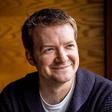


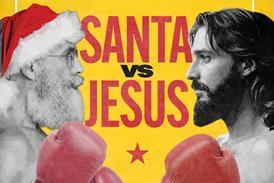
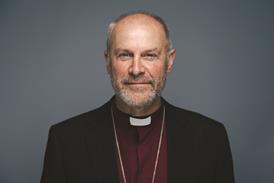
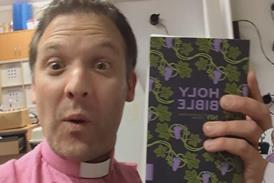




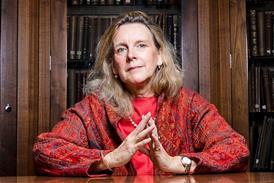




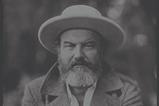
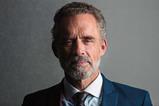






















No comments yet